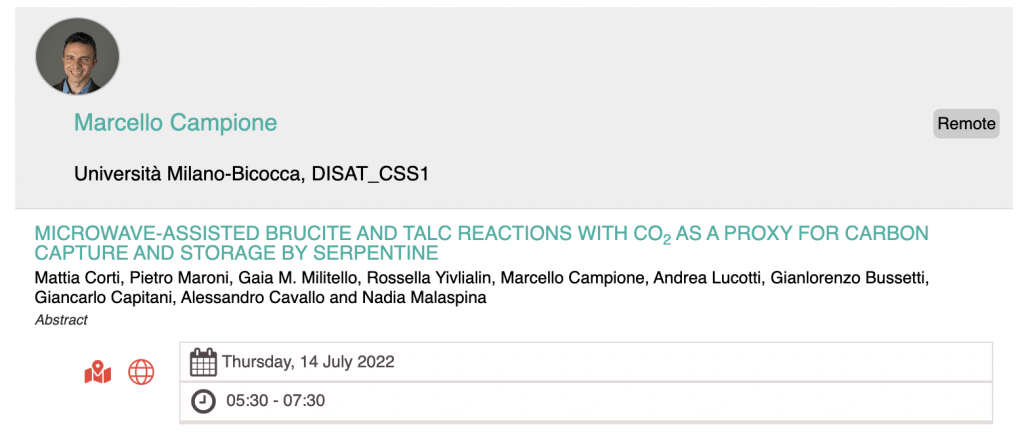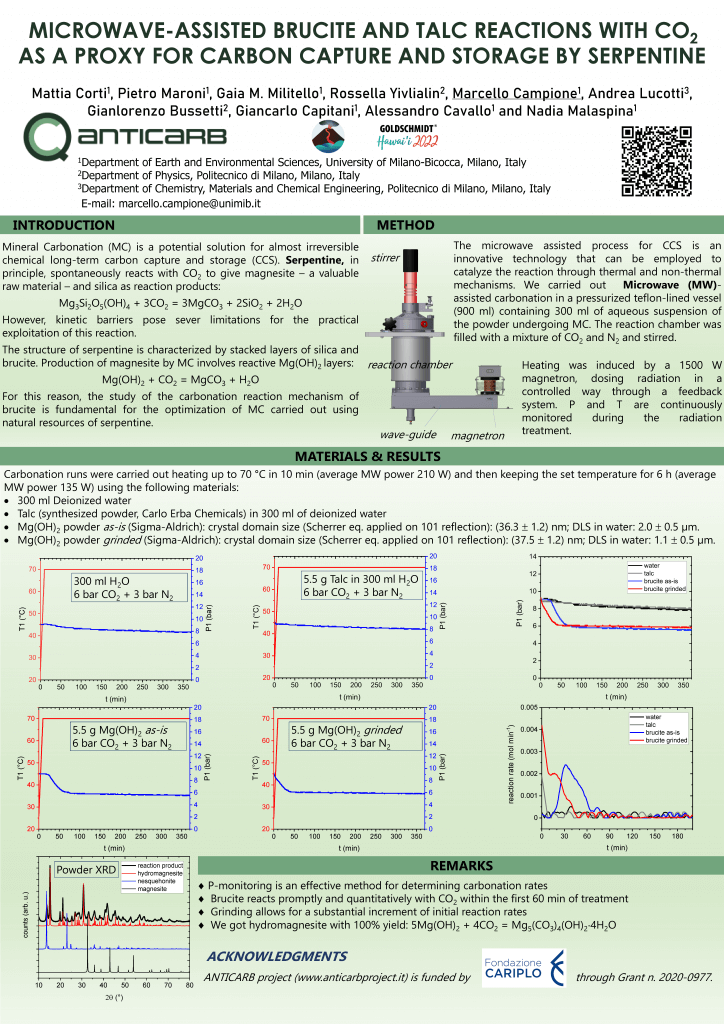Marcello Campione (University of Milano-Bicocca) presented a virtual poster at the Goldschmidt Conference 2022, one of the most significant global congresses on Geochemistry, summarized in this text.
Microwave-assisted Brucite and Talc reactions with CO2 as a proxy for Carbon Capture and Storage by Serpentine
In the last decades many studies have been focusing on Carbon Capture and Storage (CCS) to find a possible remedy to reduce the large increase of anthropogenic carbon dioxide (CO2). Mineral Carbonation (MC) is a potential solution for almost irreversible chemical long-term CCS. It concerns the combination of CaO and MgO with CO2 forming spontaneously and exothermically dolomite and magnesite. However, kinetic barriers pose sever limitations for the practical exploitation of this reaction.
High fractions of MgO are available in silicates such as olivine, orthopyroxene, clinopyroxene and serpentine. To date, data reported that serpentine polymorphs, above all antigorite, is an excellent candidate for fixing the CO2 as the reaction efficiency is approximately 92% compared to lizardite (40%) and olivine (66%). This is due to the surface reactivity of approximately 18.7 m2/g for the dehydrated antigorite compared to10.8 m2/g for dehydrated lizardite and 4.6 m2/g for olivine.
The microwave assisted process for CCS is an innovative technology that can be employed to catalyze the reaction through thermal and non-thermal mechanisms. Some pioneering tests of direct carbonation by microwave hydrothermal equipment have been performed on olivine, lizardite and chrysotile powders [1] but not on antigorite. The structure of serpentine is characterized by corrugated stacked layers of silica and brucite. For this reason, MC involves dissolution of SiO2 layers, dissolution/dehydration of Mg(OH)2 layers, and precipitation of magnesium carbonate.
To address the chemical response of the single phases, experiments have been performed by both a local microwave-source acting locally on a specific crystal surface and a volume source interacting with an ensemble of grains on synthetic powders and single crystals of pure brucite and talc. In a second step, treatments have been extended to chrysotile, lizardite and antigorite. A characterization of the mechanism and kinetics were performed by scanning probe microscopy on the surface of single crystals phases, supported by Raman spectroscopy and by Scanning and Transmission Electron Microscopy study performed on micro- and nano-sized grains.
[1] White, et al. Reaction mechanisms of magnesium silicates with carbon dioxide in microwave fields. Final Report to the U.S. Department ofEnergy, National Energy Technology Laboratory (2004)
To see the poster:
https://conf.goldschmidt.info/goldschmidt/2022/meetingapp.cgi/Paper/12325



